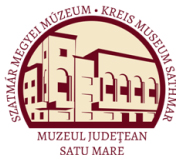Marta, Liviu: The Late Bronze Age Settlements of Petea-Csengersima (Satu Mare, 2009)
VI. Annexes
weight s 1 1 20/1 weight c DE 2 1 20/2 weight c DE 2 1 20/3 weight c 1 1 20/4 weight c DE 2 1 20/5 weight c DE 2 1 20/6 weight s 1 1 20/7 storage v..c 1 1 20/8 p. cooking v.c AA 1 20/9 f IB 1 c AG 1 c c EA 1 s EA 1 s IB 1 s IE,IB 1 _ S14 Complex 6 (Fig. 11, 12) — A pit had irregular, oval oudine, (82 x 105 cm), and was identified in the sterile soil. The walls were 53 cm high, steeply inclined towards the inside. The base was slightly irregular, the fill was dark-grey with small, scattered fragments of daub and charcoal. Inventory: 28 ceramic shards that originated from 10 vessels. Date/culture: Lăpuş II—Gáva I. lottery shape Paste Decoration type Pottery type No. of elements Plate dish f GH 3 1 21/1 dish 2Ad 1 21/2 dish 2Ad 1 21/3 cup f 1 Ab 1 21/4 514 Complex 7 (Fig. 11, 12) — A pit had semi-oval rim (132 x 156 cm) and step-like walls or with various inclinations. They were 44 cm high. The pit had irregular base, and the fill was dark-grey with small fragments of daub and scattered charcoal pieces. No ceramic inventory, not assigned to an archaeological culture. Sector S15 (62,5 m2, Fig. 11) 515 Complex 1 (dwelling) (Fig. 11, 13) - A rectangular daub platform (218 x 320 cm) was found in the uppermost part of the cultural layer, at 37-40 cm deep. The daub platform was 15-20 cm thick, and cut the soil as much as 8-12 cm above the lowermost limit of the cultural layer, in 63 and 70 cm depth. Oriented north to south, the platform was originally about 3,50 cm long and, in the northern part, it was destroyed over a length of 20—30 cm during excavations. The corners of the platform revealed 4 pits of which 2 were in the eastern part and appeared to be pillar pits (Complexes 2 and 5). The pit in the north-western corner (Complex 3) was beehive shaped and had the role of a storage pit. The functionality of the oval pit couldn't be determined in the south-western corner. Pits 3, 4 and 5 were superimposed by a layer of daub that went down into their fill. This situation attested the fact that they operated at the same dme with the construction that had been burnt. The daub from the platform preserved impressions of faceted, wooden surfaces, carved in right angle (pillars or beams), as well as of some circular poles or rods. Several fragments of daub preserved traces of poles with 10-13 cm in diameter, laid parallel, one after another. Other pieces of daub preserved the traces of some rods with 3-4 cm in diameter, laid parallel, one after another. Inventory: 56 ceramic shards (4 were re-fired) that originated from at least 7 vessels. Date/culture: Lăpuş II—Gáva I. Pottery shape Paste Decoration type Pottery type No. of elements Plate cup f AE.IA 4 1 21/12 amphora s GB 1A 1 21/15 s AA 1 s IB 1 s JC_______________________ 1 _
